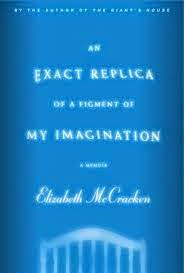The bedroom is strange.Unfamiliar. I don't know where I am, how I came to be here. I don't know how I'm going to get home.
Description:
A woman wakes one morning with no memory of where she is or even who she is. There is a greying man snoring in bed beside her. When she looks into the bathroom mirror she views a woman in her late 40's, a disturbing image to her as her last memory is her as a college student. Decades apparently have passed and are completely unknown to her. There are photos pasted to the mirror of a man, the same man from the bed, with the notation that "This is Ben, your husband." Again, she does not recognize him.
So begins each and every day for Christine in S.J. Watson's imaginative novel, Before I Go to Sleep. When Christine faces Ben over breakfast, he has to tell her he is indeed her husband, they are very much in love, and that she was in a serious car accident that put her in a coma and took away her ability to retain memories. As her "first day" passes, she finds she is able to remember things that happen during day, but as she sleeps at night these memories are erased and she again has to re-meet Ben and learn of her past each and every morning.
A phone call from a Dr. Nash informs her that she and the doctor have been meeting secretly to work on her memory loss. Dr. Nash is a local neuropsychologist who has given Christine a notebook to record anything during the day so she can read it and understand who she is and what she knows. Dr. Nash asks her to keep their visits and the notebook secret from Ben because her husband doesn't want Christine to go through any more heartbreaking experiences with doctors.
When every scrap of information about her life comes to Christine from strangers she just met, she begins to wonder who can she really trust? Christine feels Ben, in answering her questions, has not been telling the entire truth. Is he protecting her from further disturbance to their settled life? When confronted, he tells her the real story and she secretly writes it down in her notebook to consult the next day. But she also wonders whether Dr. Nash is all he claims to be as well.
And where are her former friends from before the accident? And why has she written "Don't Trust Ben" on the opening page of her notebook? Questions, questions, and more questions every day from Christine make her even more confused.
Watson has a gripping writing style in his stream of consciousness narrative from Christine's confused mind. We quickly grasp Christine's confusion, her fears, and her drive to understand who she and these people around her really are. As Christine repeatedly consults her journal to relearn about her past and present, she slowly adds new information about her life. Then, she too begins to keep secrets from various people.
Riveting right up to the final pages when the climax and truth are finally revealed, and she finally understands her past and future.
So begins each and every day for Christine in S.J. Watson's imaginative novel, Before I Go to Sleep. When Christine faces Ben over breakfast, he has to tell her he is indeed her husband, they are very much in love, and that she was in a serious car accident that put her in a coma and took away her ability to retain memories. As her "first day" passes, she finds she is able to remember things that happen during day, but as she sleeps at night these memories are erased and she again has to re-meet Ben and learn of her past each and every morning.
A phone call from a Dr. Nash informs her that she and the doctor have been meeting secretly to work on her memory loss. Dr. Nash is a local neuropsychologist who has given Christine a notebook to record anything during the day so she can read it and understand who she is and what she knows. Dr. Nash asks her to keep their visits and the notebook secret from Ben because her husband doesn't want Christine to go through any more heartbreaking experiences with doctors.
When every scrap of information about her life comes to Christine from strangers she just met, she begins to wonder who can she really trust? Christine feels Ben, in answering her questions, has not been telling the entire truth. Is he protecting her from further disturbance to their settled life? When confronted, he tells her the real story and she secretly writes it down in her notebook to consult the next day. But she also wonders whether Dr. Nash is all he claims to be as well.
And where are her former friends from before the accident? And why has she written "Don't Trust Ben" on the opening page of her notebook? Questions, questions, and more questions every day from Christine make her even more confused.
Watson has a gripping writing style in his stream of consciousness narrative from Christine's confused mind. We quickly grasp Christine's confusion, her fears, and her drive to understand who she and these people around her really are. As Christine repeatedly consults her journal to relearn about her past and present, she slowly adds new information about her life. Then, she too begins to keep secrets from various people.
Riveting right up to the final pages when the climax and truth are finally revealed, and she finally understands her past and future.
If this book interests you, be sure to check out:
Shreve, Anita. Stella Bain
A woman wakes up in a French military field hospital during World War I with no memory of her identity or how she arrived in this situation. She painstakingly struggles to uncover her past and what the future hold for her. (previously reviewed here)








